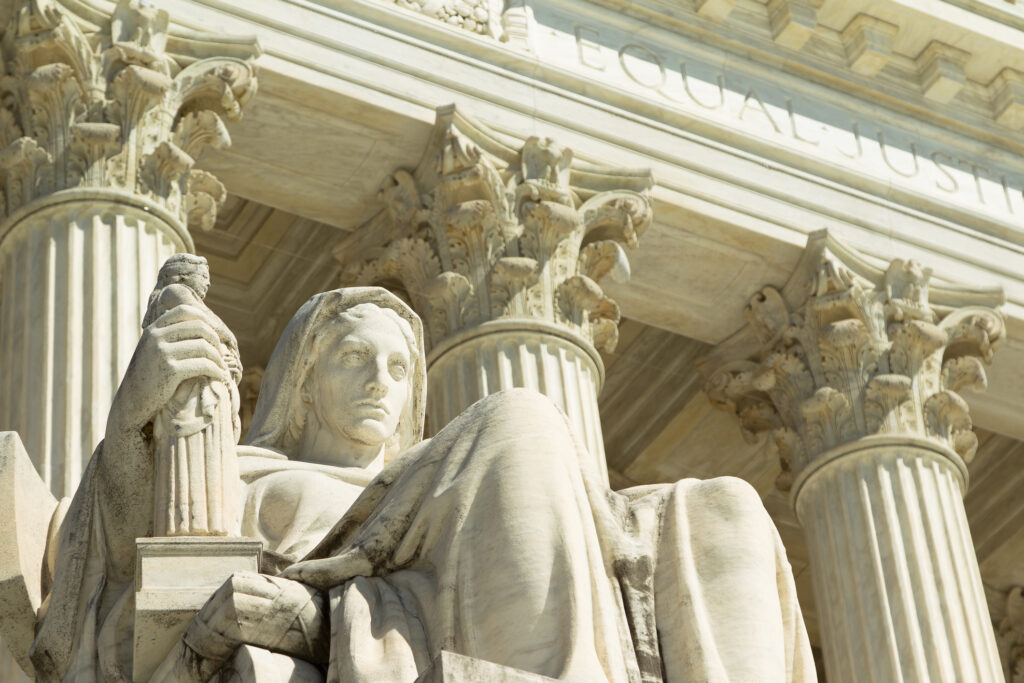
A reminder: China’s regime is the actual problem.
The Supreme Court on Monday morning declined to hear a legal challenge put forth by a group of steel importers who argued that steel tariffs put in place back in 2018 are unconstitutional.
The Trump administration placed a 25 percent tariff on steel imports after a Commerce Department investigation determined surging imports pose a threat to national security. Some countries, including Canada and Mexico, were eventually given exemptions.
But the American Institute for International Steel, which represents steel importers and users of imported steel, fought the tariffs in court. The group argued that Section 232 of the 1962 Trade Expansion Act, which allows presidents to conduct trade enforcement on national security grounds, “is unconstitutional because it delegates too much discretion to the president at the expense of Congress.”
The group didn’t have much luck; even before the Supreme Court decision to decline the case, lower courts also rejected the argument.
We think the Supreme Court ultimately made the right call in this case. But frankly, all of this is somewhat of a distraction from what is really at the heart of the whole problem, which is how China’s massive, unchecked industrial overcapacity poses a threat to our national and economic security.
For years, China has been making far more steel than it can use. Since 2000, 75 percent of all new global steel stock has come from China. Rather than reduce its steel production to more appropriate levels and become a responsible player, China’s regime instead opts to dump its excess steel into the global market, priced far below fair market value.
China’s steel companies are state-owned and heavily subsidized, so they don’t need to worry about turning a profit – nor do they care. China’s government ultimately wants to drive out any competition so it can dominate the global market.
America’s steelworkers and companies suffered for years because of China’s industrial overcapacity. Dozens of factories closed, and tens of thousands U.S. workers lost their jobs.
The Trump administration wasn’t the first to try to address this threat; the Obama administration put in place a number of tariffs on specific steel products in an attempt to stop the surge of dumped imports into the U.S. market. Former President Barack Obama even used his final G-20 summit to call on China to reduce its capacity, which led to the creation of a special global forum to tackle the issue.
Still, the U.S. steel industry still found itself reeling with job losses and plant closures. After President Trump took office, his team opted for an across-the-board approach, utilizing Section 232 authority to issue the 25 percent tariff and stop surging steel imports.
American steelworkers benefited, with tens of thousands able to head back to work. Steel companies restarted some shuttered factories and announced big investments to upgrade facilities.
But ultimately, the steel tariffs are merely a band-aid on a much bigger wound. Remember that global forum created during the Obama administration? China already left it and remains entirely uncommitted to reducing its steel overcapacity.
In fact, things might have gotten worse, because while China shut down construction and many of its factories in response to the coronavirus pandemic, it kept its steel plants operational… which means there’s likely even more excess steel laying around. Meanwhile, China's steel output hit a record high in May.
This problem isn’t going away. Ultimately, China’s regime is only going to continue its attempt to overtake global markets, both in steel and in other sectors. As a new report from the team at Horizon Advisory outlines, China is aiming to use the current COVID-19 pandemic as a way to gain a greater foothold in key industries, seize assets and further its geopolitical goals.
The steel tariffs must remain in place. They provide a much-needed line of defense for U.S. steelworkers, ensuring that China cannot flood the U.S. market and put American companies out of business.
But the tariffs are just a stop gap. Ultimately, policymakers must do more to strengthen America’s own steel industry, including by finally getting to work on rebuilding America’s crumbling infrastructure. That will boost demand at a critical time, and if Buy America provisions are included, policymakers can guarantee that work will take place locally instead of being sent overseas.
And the United States and its allies must work together to counter China’s regime. This problem will not end until China no longer sees flooding global markets as a worthwhile strategy and finally reduces its industrial capacity.
